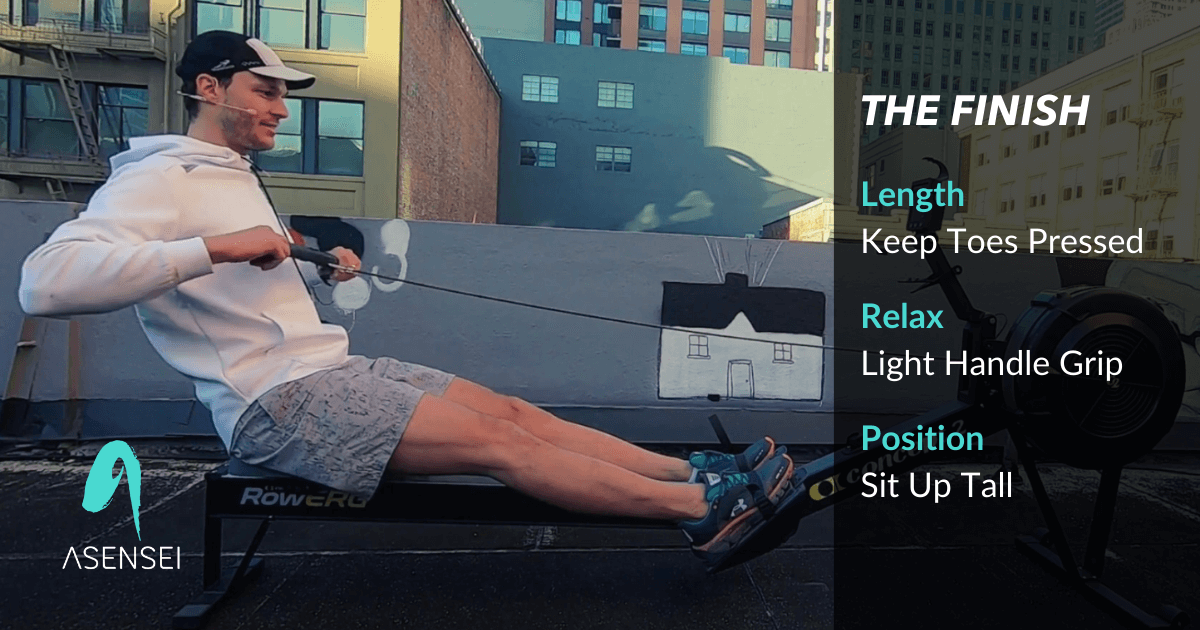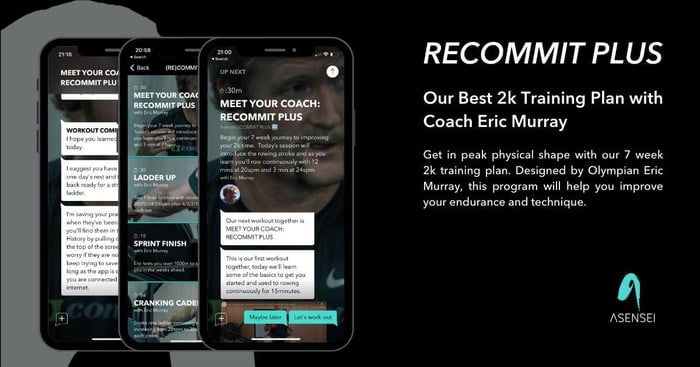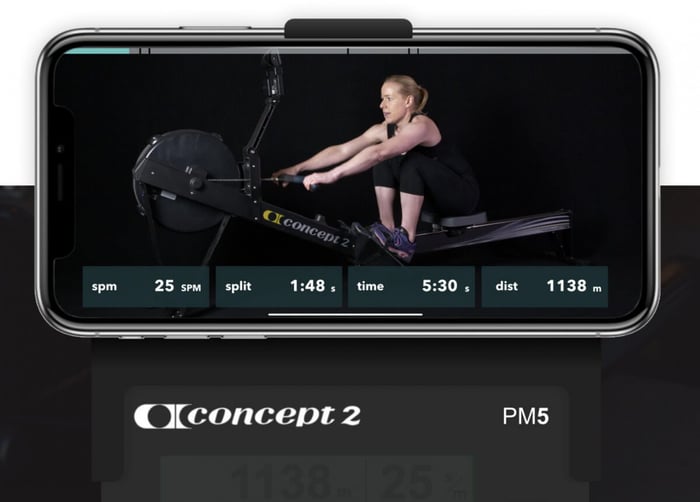Indoor rowing is a skillful blend of strength and precision, where mastering proper rowing machine form is key. This guide focuses on each critical component of the rowing stroke - drive, finish, recovery, and catch - emphasizing the correct form for enhanced performance and reduced injury risk. Tailored for rowers of all levels, from beginners to seasoned enthusiasts, this article breaks down these phases in simple, understandable terms. We'll integrate expert coaching advice to help you refine your technique, improve your efficiency, and enjoy the full benefits of this challenging yet rewarding sport.
Table of Contents
- Essential Techniques for Indoor Rowing: Mastering the Drive, Finish, Recovery, and Catch
- Step-by-Step Video Guide: Mastering Proper Rowing Machine Form in 3 Minutes
- Avoiding Common Mistakes for Proper Rowing Machine Form
- Fundamental Rowing Concepts
- Q&A on Proper Rowing Machine Form
- Conclusion
- TRY ASENSEI TODAY FOR FREE!
Rowing Machine Technique: Mastering the Drive, Finish, Recovery, and Catch
Proper rowing machine form can be broken down into four essential components, the Catch and Finish positions at either end of the stroke and the Drive and Recovery movements which describe how to transition between those positions. In the following sections we break down each of the rowing stroke, focusing on body positions, sequencing and common mistakes.
The Drive: Perfecting Form for Power Application

The drive phase is where the rower applies power. It begins with a strong push from the legs, followed by a powerful pull from the back and arms. The sequence is essential: the legs drive first, then the back opens using the hips, and finally, the arms pull the handle towards the chest. Smooth, continuous motion is vital, as jerky movements can disrupt your balance.This phase is all about converting strength into speed efficiently.
The Finish: Maintaining Form for Momentum
At the finish, the handle is drawn into the body, concluding the drive. It's crucial to execute this phase with firm pressure, with the hands drawing swiftly into the ribcage and elbows passing close to the body. This part of the stroke maintains the momentum gained during the drive. Over-leaning at this point can be counterproductive, potentially slowing down the subsequent recovery phase. The average lean back angle at the finish position is around 25-30 degrees from vertical (sitting completely upright). The photo above featuring Coach Johan Quie demonstrates this angle. To find out more about the finish, including drills and advice for 2x Olympian Eric Murray, check out this article..
The Recovery - Arms Extend, Body Pivots, Legs Break
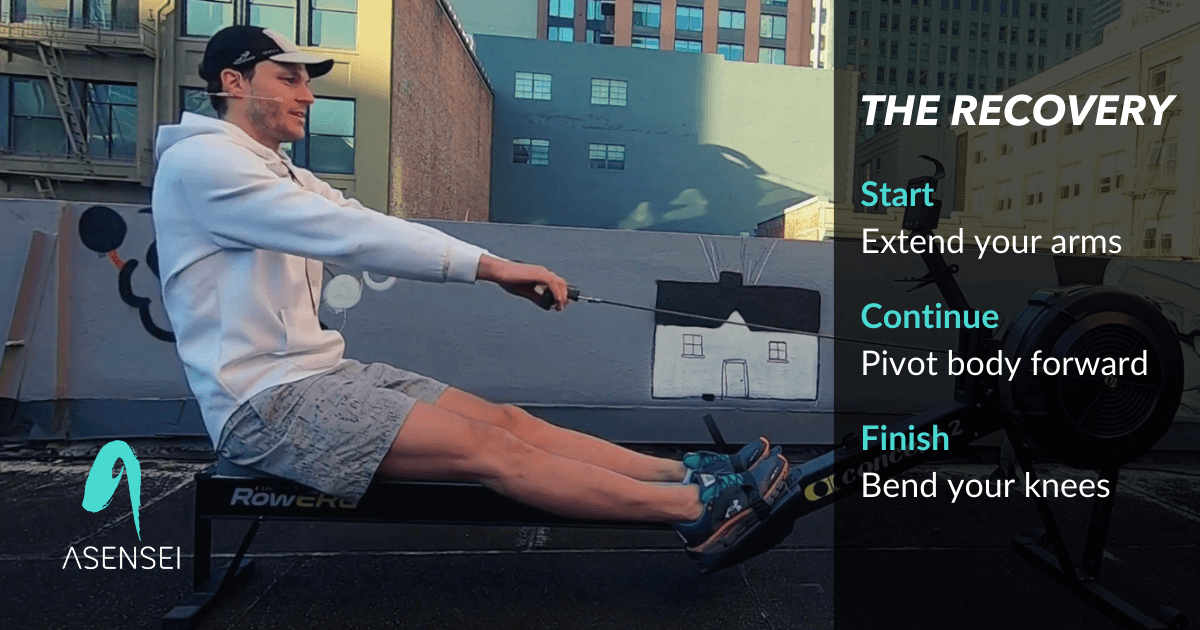
Recovery is the transitional phase where rowers prepare for the next stroke. It's a period of relaxation and controlled movement. Hands move away from the body first, then the body pivots forward from the hips, and finally, the knees bend as the rower slides towards the catch. The recovery's pace is consistent, setting the rhythm for the stroke rate and allowing for a brief respite while maintaining flow. An ideal ratio for the recovery phase on the indoor rowing machine is usually 2-1. At 20 stroke per minute, this would mean for every 1 second we spend on the drive, we spend 2 seconds on the recovery.
The Catch - Relaxation and Precision
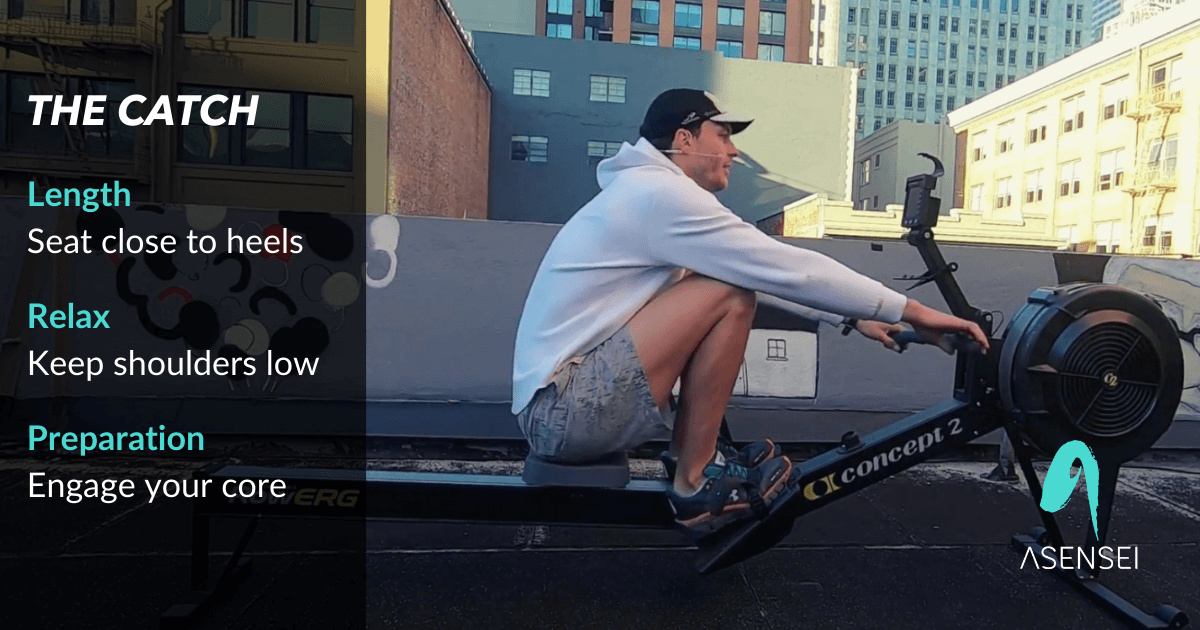
The catch marks the beginning of the next stroke. This action should be quick and sharp, minimizing delay for an efficient stroke transition. The body is poised, leaning forward, with shins vertical and arms extended. Avoiding an excessive reach, or 'diving', at the catch is crucial to maintain balance and speed. Want to find out more? Check out this in-depth article about the catch featuring Olympic Champion Rower Eric Murray.
Step-by-Step Video Guide: Mastering Proper Rowing Machine Form in 3 Minutes
Common Mistakes to Avoid for Proper Rowing Machine Form
Indoor rowing, while sharing fundamental similarities with on-water rowing, has its own set of common mistakes. Here are some common errors in indoor rowing and tips on how to avoid them and achieve proper rowing machine form:
1. Rushing the Recovery
Just like in on-water rowing, rushing the recovery on an indoor rower can disrupt rhythm and efficiency. It's important to maintain a controlled pace, allowing the seat to glide smoothly towards the catch, setting a consistent stroke rate.
2. Incorrect Posture
Proper posture is crucial on an indoor rower. Slouching or leaning too far back at the finish can strain the back. Maintaining a straight, strong back throughout the stroke, with a slight lean back at the finish, is key to a good technique.
3. Inconsistent Stroke Length
On an indoor rower, it's common to either underreach or overreach at the catch. This leads to a less effective stroke. Ensure that at the catch, the shins are vertical and the arms are extended but relaxed, without straining the shoulders or back. A longer rowing stroke means you'll go faster, right? But do you know what is effective length, and what is unnecessary length? Check out this article from Eric Murray where he gives you 3 tips to go faster sooner.
4. Excessive Grip on the Handle
A tight grip on the rowing machine's handle can lead to unnecessary tension in the arms and shoulders. Hold the handle lightly with a relaxed grip, using the fingers rather than the palms, to reduce fatigue and increase efficiency.
5. Inadequate Leg Drive
The leg drive is crucial in indoor rowing, just as it is on water. Ensure that the power primarily comes from a strong, smooth leg push, and avoid relying too heavily on the back and arms.
6. Not Utilizing the Entire Footplate
Some rowers tend to push mainly through the balls of their feet. It's important to use the whole foot during the drive, spreading the force across the entire footplate of the indoor rowing machine for a more powerful and stable stroke.
7. Erratic Pacing
Indoor rowers often make the mistake of starting too fast and not maintaining a consistent pace. It's important to find a sustainable rhythm that matches your fitness level and to stick to it throughout your workout while maintain proper rowing form.
Fundamental Rowing Concepts
Once you've mastered proper rowing technique, consider exploring these advanced concepts to further enhance your performance:
Damper/Drag Factor
| Understanding the damper or drag factor setting on your rowing machine can significantly impact your workout's effectiveness. It relates to the resistance you feel with each stroke. Read this article for a deeper look into damper and drag factor, how they affect your workouts; the best damper setting and drag factor for you and suggested workouts!. | 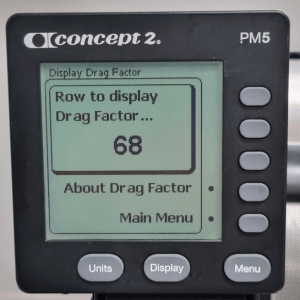 |
Foot Position
| Adjusting the foot position can alter your comfort, power output, and overall rowing mechanics. Correct placement ensures optimal power transfer and reduces the risk of injury. Learn about Foot Position for proper rowing machine technique in this article where Eric Murray explains the science behind foot placement. | 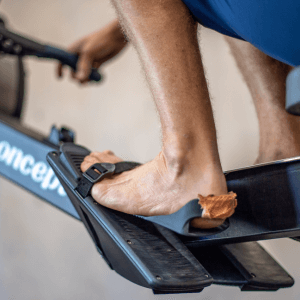 |
Stroke Rate/SPM (Strokes Per Minute)
| Managing your stroke rate is key to maintaining efficient and sustainable rowing throughout your session. It's about finding the right balance between speed and power. It’s often thought that the only way to get fast is to train fast, that only anaerobic training builds speed. Eric Murray debunks this idea in this article. |  |
Split Time
| Think of your split time as how fast you’re going. It measures how long it will take you to cover 500m at the pace/effort you’re currently exerting – the lower the number, the faster you’re going. Learn why split times matter for going faster for longer in this section from our Indoor Rowing: The Ultimate Guide. | 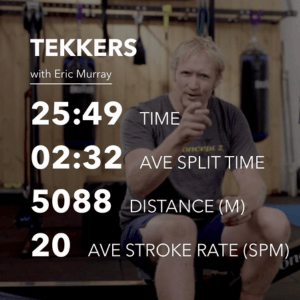 |
Force Curve
| The force curve provides insights into your stroke's power and efficiency, allowing you to adjust your technique for better performance. Interested in learning about how your force curve should look and how to use them? Check out our in-depth article which features a video explainer from Eric Murray. |  |
FAQ on Proper Rowing Machine Form
How can I improve my 2000m indoor rowing time?
Answer: Improvements in 2000m times often come from consistent technique, power application, and stroke rate. asensei’s article on The Secrets to a Faster 2000m Indoor Rowing Test delves into how athletes can enhance their performance based on analytics insights and training tips. Our analysis came from one our most popular program - (RE)COMMIT with 2x Gold Medal Olympian Eric Murray. It is a 6 week structured program which uses your training data to set a 2000m target time for you to achieve. Looking for a bigger challenge? You can try our extended 7 week program - (RE)COMMIT PLUS, our best 2000m training program.
What are effective warm-up techniques for indoor rowing?
Answer: A proper warm-up is crucial and should be tailored to the length and intensity of your rowing session. asensei’s Seven Tips for the Perfect Indoor Rowing Warmup provides a comprehensive guide on how to warm up effectively, including specific exercises and progression strategies for achieving proper rowing machine form.
How can I maintain consistency in my indoor rowing practice?
Answer: Consistency is key to improvement, especially for learning the correct rowing machine technique for beginners. Developing a routine and adhering to a well-structured training plan can significantly impact your progress. Explore asensei’s various indoor rowing programs for structured guidance and expert coaching tailored to different skill levels and goals.
Conclusion
Mastering indoor rowing requires more than just physical strength; it demands a deep understanding of technique and rhythm. This guide has explored crucial aspects of the rowing stroke – from the powerful drive to the precise catch, emphasizing proper rowing machine form. Remember, perfecting these techniques not only boosts performance but also enhances the enjoyment of the sport. As you continue to practice and apply these insights, your skills and confidence in maintaining proper rowing machine form will grow. Embrace the challenge, and keep rowing towards your personal best!
TRY ASENSEI TODAY FOR FREE!
Rowing is better in the asensei app. You will have all the key stats displayed on screen during your session, you will have asensei set you personalized goals, you won't need to program the machine nor take note of your results, asensei does it all.
|
asensei is FREE to download and with no commitment you can trial the first 3 workouts in the (RE)COMMIT program and also workouts from MASTER THE BASICS, (RE)FOCUS, SWEAT FACTORY and BE A DARK HORSE. All you need is an iPhone and access to an asensei Compatible rowing machine from Concept 2, WaterRower or FluidRower with a bluetooth capable monitor. |



